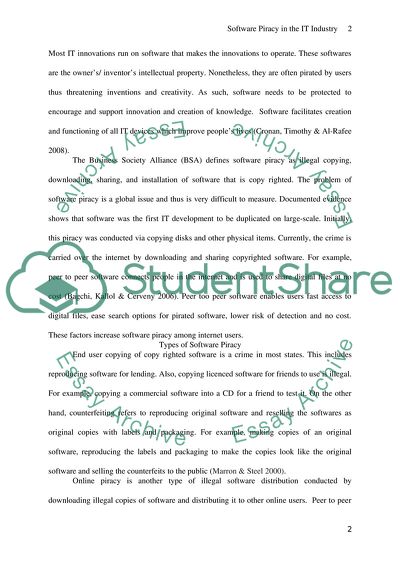Cite this document
(Software Piracy Problem in the IT Industry Coursework Example | Topics and Well Written Essays - 2250 words, n.d.)
Software Piracy Problem in the IT Industry Coursework Example | Topics and Well Written Essays - 2250 words. https://studentshare.org/information-technology/1858477-professional-practice-and-social-responsibility
Software Piracy Problem in the IT Industry Coursework Example | Topics and Well Written Essays - 2250 words. https://studentshare.org/information-technology/1858477-professional-practice-and-social-responsibility
(Software Piracy Problem in the IT Industry Coursework Example | Topics and Well Written Essays - 2250 Words)
Software Piracy Problem in the IT Industry Coursework Example | Topics and Well Written Essays - 2250 Words. https://studentshare.org/information-technology/1858477-professional-practice-and-social-responsibility.
Software Piracy Problem in the IT Industry Coursework Example | Topics and Well Written Essays - 2250 Words. https://studentshare.org/information-technology/1858477-professional-practice-and-social-responsibility.
“Software Piracy Problem in the IT Industry Coursework Example | Topics and Well Written Essays - 2250 Words”. https://studentshare.org/information-technology/1858477-professional-practice-and-social-responsibility.


